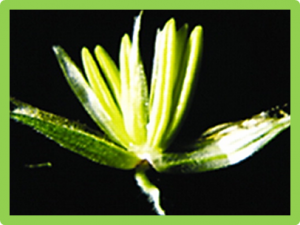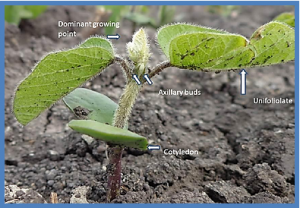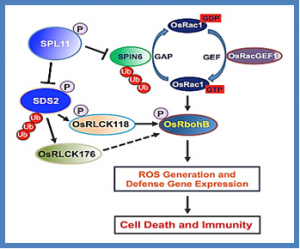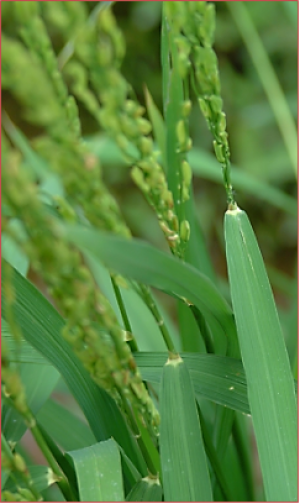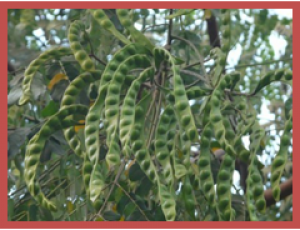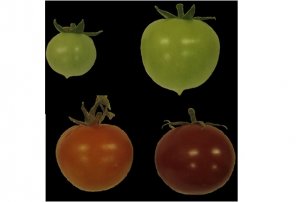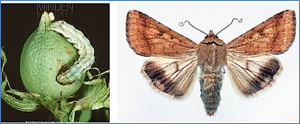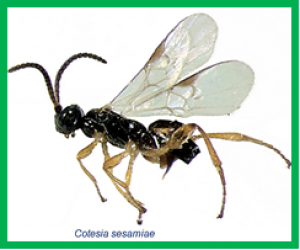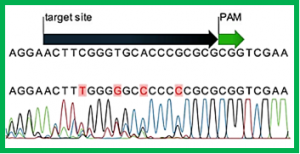Previous studies revealed that the promoters for driving both Cas9 and sgRNAs are quite important for efficient genome editing by CRISPR/Cas9 in plants. Here we report our results of targeted genome editing using the maize dmc1 gene promoter combined with the U3 promoter for Cas9 and sgRNA, respectively. Three loci in the maize genome were selected for targeting. The T0 plants regenerated were highly‐efficiently edited at the target sites with homozygous or bi‐allelic mutants accounting for about 66%.
To understand translational capacity on a genome-wide scale across three developmental stages of immature soybean seed cotyledons, ribosome profiling was performed in combination with RNA sequencing and cluster analysis. Transcripts representing 216 unique genes demonstrated a higher level of translational activity in at least one stage by exhibiting higher translational efficiencies (TEs) in which there were relatively more ribosome footprint sequence reads mapping to the transcript than were present in the control total RNA sample.
Programmed cell death (PCD) plays critical roles in plant immunity but must be regulated to prevent excessive damage. The E3 ubiquitin ligase SPL11 negatively regulates PCD and immunity in plants. We show that SPL11 cell-death suppressor 2 (SDS2), an S-domain receptor-like kinase, positively regulates PCD and immunity in rice by engaging and regulating SPL11 and related kinases controlling defense responses.
Few public sector rice breeders have the capacity to use NGS-derived markers in their breeding programmes despite rapidly expanding repositories of rice genome sequence data. They rely on > 18,000 mapped microsatellites (SSRs) for marker-assisted selection (MAS) using gel analysis. Lack of knowledge about target SNP and InDel variant loci has hampered the uptake by many breeders of Kompetitive allele-specific PCR (KASP), a proprietary technology of LGC genomics that can distinguish alleles at variant loci.
Our agricultural system and hence food security is threatened by combination of events, such as increasing population, the impacts of climate change and the need to a more sustainable development. Evolutionary adaptation may help some species to overcome environmental changes through new selection pressures driven by climate change. However, success of evolutionary adaptation is dependent on various factors, one of which is the extent of genetic variation available within species.
Polyamines (PAs), including putrescine (Put), spermidine (Spd), spermine (Spm), and thermospermine (T-Spm), play key roles in plant development, including fruit setting and ripening, morphogenesis, and abiotic/biotic stress. Their functions appear to be intimately related to their synthesis, which occurs via arginine/ornithine decarboxylase (ADC/ODC), Spd synthase (SPDS), Spm synthase (SPMS), and Acaulis5 (ACL5), respectively. Unfortunately, the expression and function of these PA synthesis-relate genes during specific developmental process or under stress have not been fully elucidated.
RNA silencing is an evolutionarily conserved mechanism that regulates variety of cellular processes in plants. Argonaute protein (AGO), Dicer-like protein (DCL) and RNA-dependent RNA polymerase (RDR) are critical components of RNA silencing. These efficient and indispensable components of the RNAi pathway have not been identified and characterized in pepper.
Helicoverpa armigera, cotton bollworm, is one of the most disastrous pests worldwide, threatening various food and economic crops. Functional genomic tools may provide efficient approaches for its management. The clustered regularly interspaced short palindromic repeats (CRISPR)/CRISPR‐associated protein 9 (Cas9) system, dependent on a single guide RNA (sgRNA), has been used to induce indels for targeted mutagenesis in cotton bollworm.
Environmental stress can affect trait size and cause an increase in the fluctuating asymmetry (FA) of bilateral morphological traits in many animals. For insect parasitoids, feeding of hosts on transgenic maize, expressing a Bacillus thuringiensis toxin gene is a potential environmental stressor. We compared the size of antennae, forewings, and tibia, as well as their FA values, in two parasitoids developed on two East African host species feeding on non-transgenic vs. transgenic maize.
Microrchidia (MORC) proteins comprise a family of proteins that have been identified in prokaryotes and eukaryotes. They are defined by two hallmark domains: a GHKL-type ATPase and an S5 fold. In plants, MORC proteins were first discovered in a genetic screen for Arabidopsis thaliana mutants compromised for resistance to a viral pathogen. Subsequent studies expanded their role in plant immunity and revealed their involvement in gene silencing and genome stabilization. Little is known about the role of MORC proteins of cereals, especially because knock-out (KO) mutants were not available and assessment of loss of function relied only on RNAi strategies, which were arguable, given that MORC proteins in itself are influencing gene silencing.


 Curently online :
Curently online :
 Total visitors :
Total visitors :
